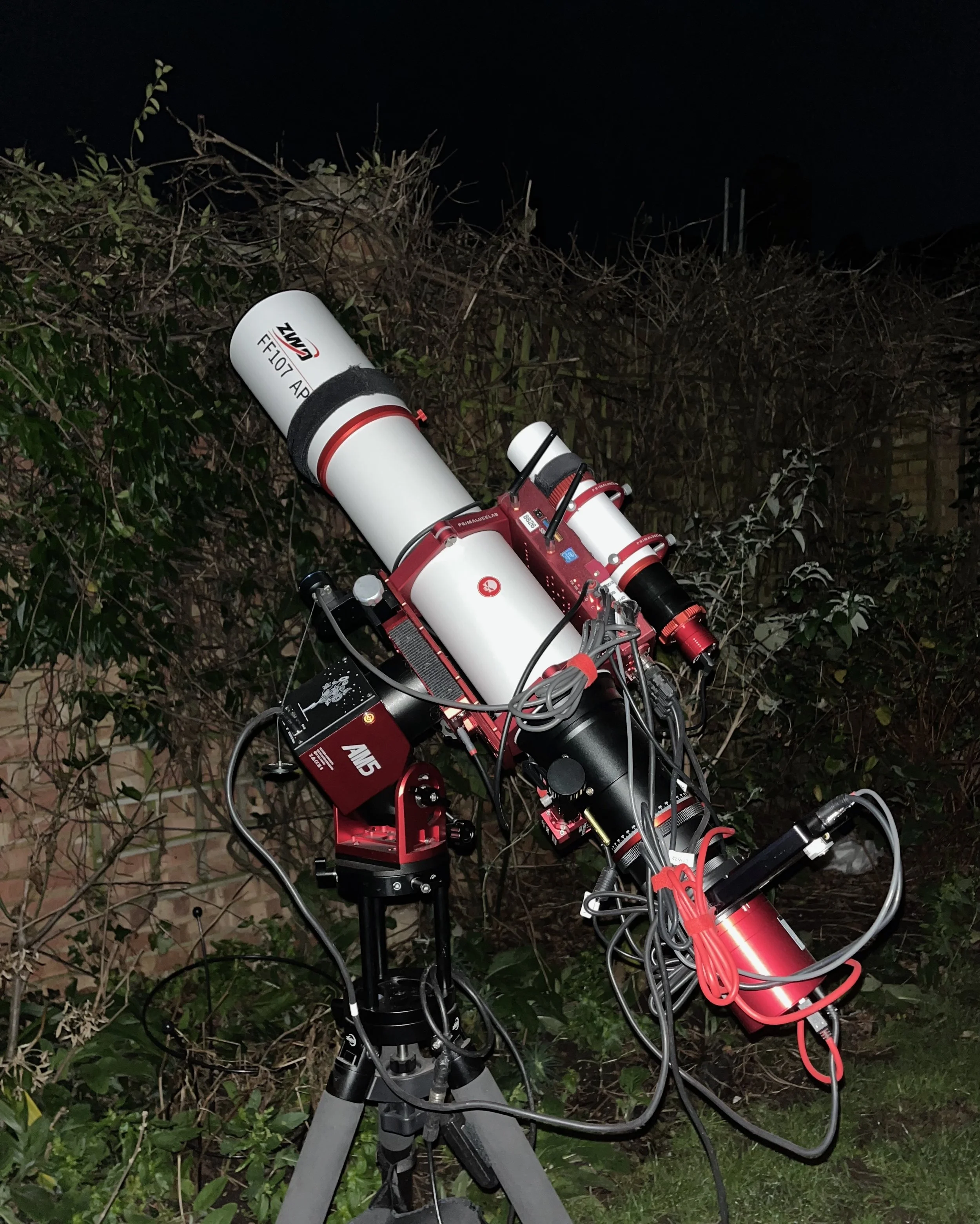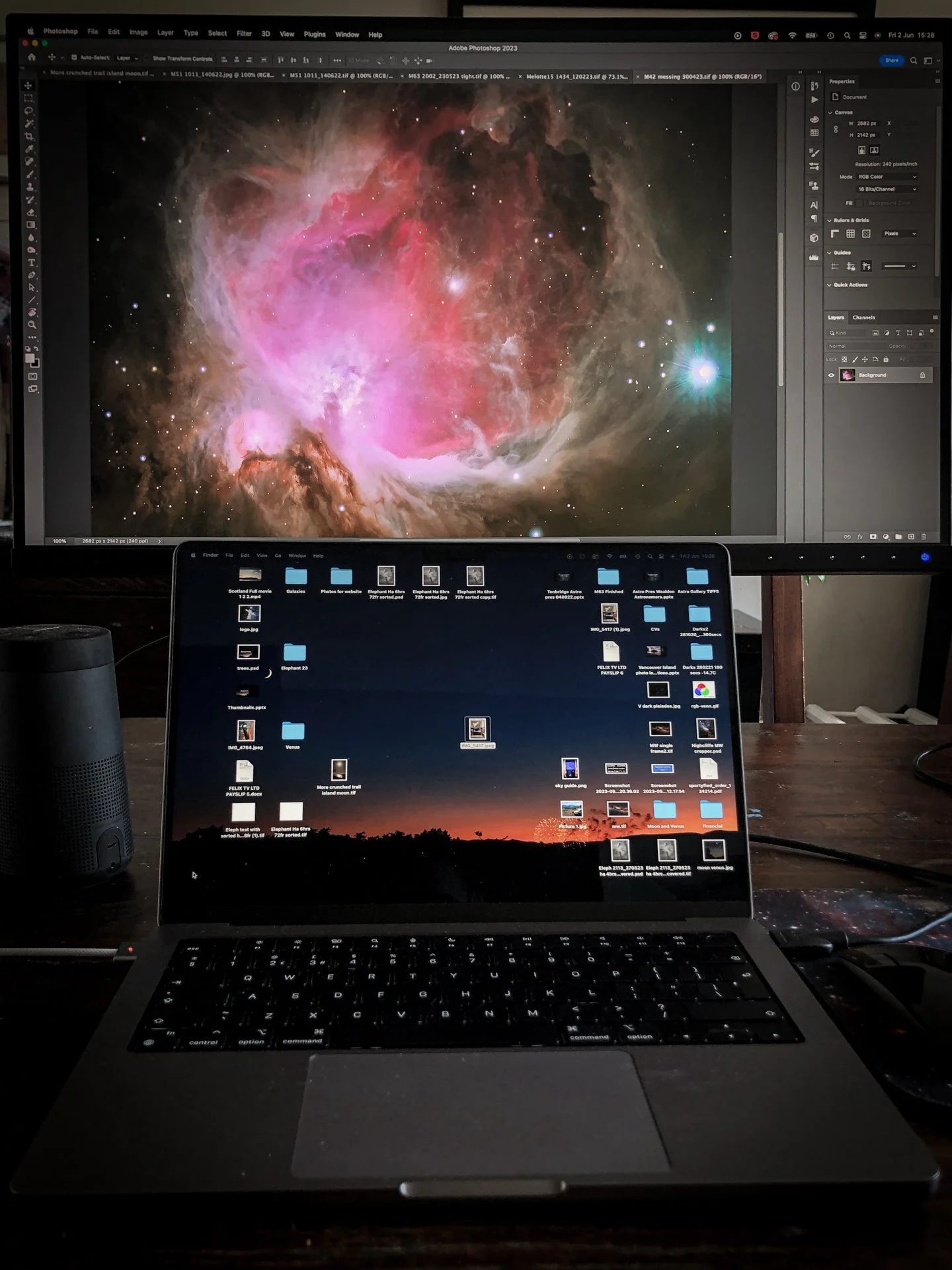
Software
Here are the astrophotography software packages I have used…
Software for the telescope
Data collection: Sequence Generator Pro. This controls everything including exposures, focusing, filter selection, plate solving, sensor temperature, guiding, meridian flips, framing, mosaic planning and more. Adopting this system changed everything for me. NINA seems to have overtaken SGP to become the most popular system and is reportedly better, but I have stuck with what is familiar to me.
ASCOM (Astronomy Common Object Model): Compatibility software that enables different parts of telescope rigs to speak to each other in a common language,
EQMOD allows my PC to communicate directly with my SkyWatcher mounts. Not needed for the ZWO AM5n.
ASTAP: Library of the night sky for plate solving. I have found this to be very reliable.
PhD2: Excellent, free guiding software.
Windows and Primalucelab proprietary software in the on-board computer (Primalucelab Eagle 4) accessed by laptop via wifi.
PoleMaster software for polar alignment. This has proved to be excellent.
Software for processing
PixInsight - Excellent processing and stacking software for astrophotography. I always combine it with with Photoshop
Photoshop - excellent, powerful processing software with vastly superior masking and colour calibration compared with PixInsight
Deep Sky Stacker (Windows only). Free alternative for stacking deep sky objects
Astro Pixel Processor. My favourite for stacking, especially mosaics (Mac + Windows)
Starry Sky Stacker (Mac only) for stacking Milky Way
Starry Landscape Stacker (Mac only) for stacking Milky Way combined with Landscape
AutoStakkert for stacking moon images (Windows only)
RC-Astro GradientXTerminator. For PixInsight and Photoshop. Irons out unwanted gradients.
RC Astro RC-Astro StarXTerminator. For PixInsight and Photoshop. Separates the star layer for the stars and starless background to be worked on separately and then combined.
RC-Astro BlurXTerminator (for PixInsight only): Excellent software for sharpening. Performs ‘deconvolution’ or sharpening and makes imperfect stars round.
Adobe Lightroom - Good for masking brush and colour calibration.
TLDF (Timelapse Deflicker) I use this to process timelapses
StarStax for creating star streaks
Sequator - a great program for Milky Way combined with landscape images. Suitable for Windows only
Plate Solving
One of the biggest steps forward I made with software was the ability to plate solve. It was actually more of a giant leap and revolutionised my sessions under the sky, saving so much time.
I started out using old school three-star alignment to tell the telescope where it was pointing before directing it to slew to a target. This was fiddly and took up valuable minutes that could be spent capturing sub-frames. Matching the exact framing with a previous session on the target was a headache. And when it came to meridian flips and re-framing, even more time was wasted.
Plate solving takes all that hassle went away. I was initially intimidated by the learning curve but it was well worth persevering. Now my telescope takes a single 10-second image of the sky and cross references that pattern of stars with an on-board library, establishing exactly where it is pointing. It reads the stars. From there it can move to any predetermined target with perfect framing, either a new field of view or matching a previous session. This whole process can take less than a couple of minutes, leaving more time to grab images. Or sleep!


